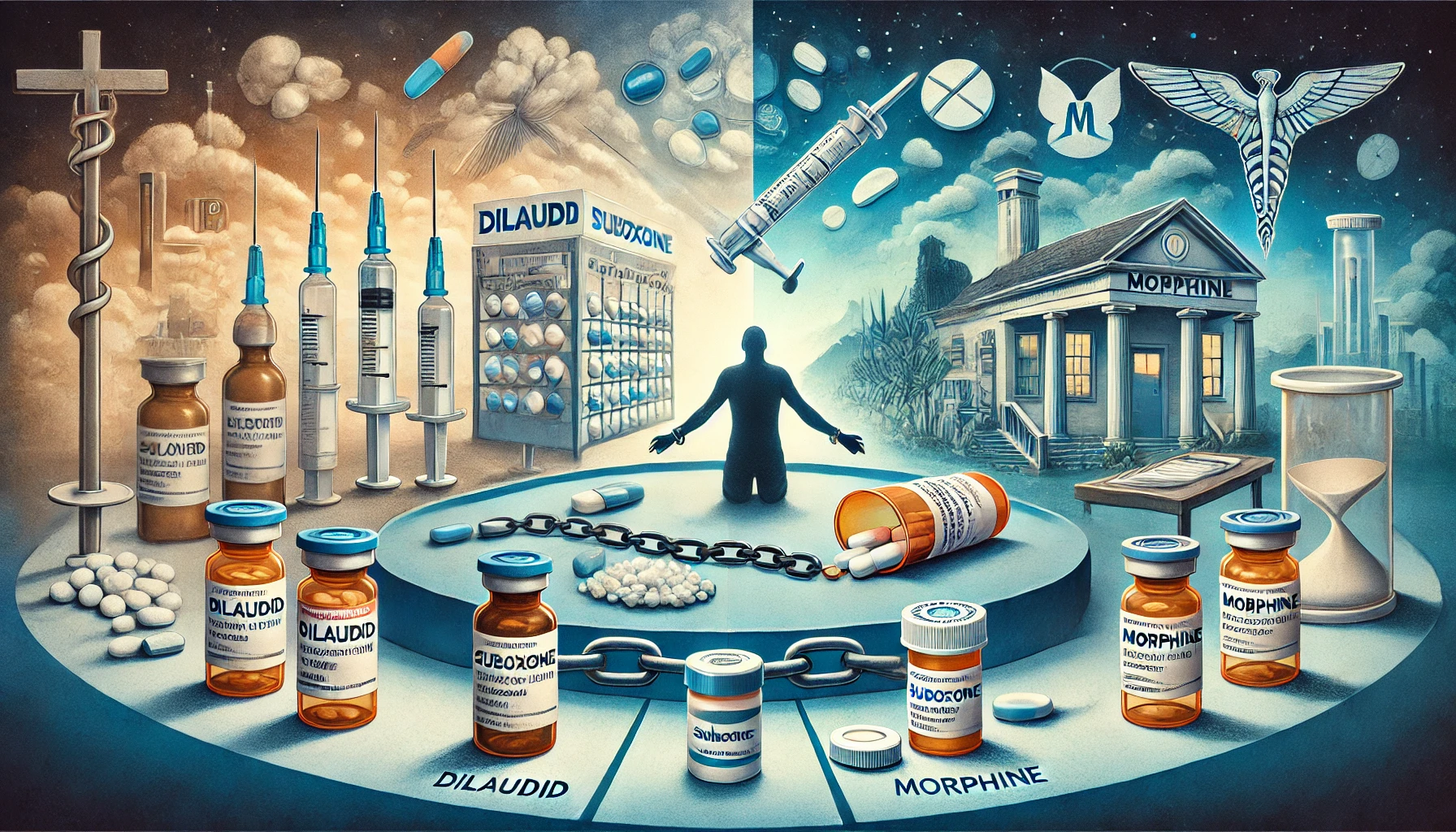Table of Contents
What Is Dilaudid Suboxone , Morphine
Dilaudid, a powerful opioid pain medication, is often surrounded by both curiosity and caution. For those grappling with severe pain or managing chronic conditions, understanding Dilaudid’s role in treatment can be life-changing. But what exactly is this medication? How does it work? And more importantly, what are the potential benefits and risks associated with its use? In a world where pain management options abound, navigating through them can feel overwhelming. Today, we’ll dive deep into Dilaudid—its uses in healthcare settings and beyond—while also providing insights on related medications like Suboxone and Morphine. Whether you’re considering buying these medications online or simply seeking knowledge about your options, get ready for an informative exploration that unpacks everything you need to know!
Suboxone 101: How It Works in Opioid Addiction Treatment
Suboxone is a combination medication that plays a crucial role in treating opioid addiction. It contains buprenorphine and naloxone, which work together to help manage withdrawal symptoms and cravings.
Buprenorphine, a partial opioid agonist, attaches to the same receptors as other opioids but activates them less intensely. This means patients can experience relief without the full effects of stronger opioids.
Naloxone acts as an antagonist, blocking the euphoric effects if Suboxone is misused. This unique pairing discourages abuse while providing essential support during recovery.
Patients often find Suboxone helps stabilize their lives by reducing cravings over time. The goal is to aid in rebuilding normalcy without falling back into addictive patterns.
In many cases, treatment with Suboxone includes counseling and behavioral therapies for comprehensive care. Together, these elements create a robust framework for lasting recovery from opioid dependency.
Morphine: A History of Pain Relief and Its Modern Uses
Morphine has a storied past, originating from the opium poppy. Discovered in the early 19th century, it marked a significant breakthrough in pain management.
Initially hailed for its effectiveness, morphine quickly became a go-to solution for severe pain relief. Physicians embraced it during wartime and in hospitals, recognizing its transformative potential.
As modern medicine evolved, so did morphine’s applications. Today, it’s often prescribed for chronic pain conditions and post-surgical recovery.
However, medical professionals are cautious due to the risk of addiction associated with prolonged use. This awareness has led to more stringent prescribing practices.
Although alternatives exist now—like synthetic opioids—the legacy of morphine remains strong within healthcare systems worldwide. Its role is both historical and contemporary as practitioners navigate the complexities of effective patient care while addressing concerns about dependency risks.
Comparing Dilaudid and Morphine: Which Painkiller Is More Effective?
Dilaudid and morphine are both powerful opioids used for pain management, but they have distinct characteristics. Dilaudid, or hydromorphone, is often considered more potent than morphine. This means that lower doses can provide similar relief.
Patients may find that Dilaudid works faster, providing quicker onset of pain relief. It’s commonly prescribed for severe pain following surgery or injury.
Morphine has a longer history in medicine and is typically the go-to opioid for chronic pain management. Many patients prefer it due to its established efficacy over decades of use.
Side effects also differ slightly between the two. While both can cause drowsiness and constipation, some users report fewer side effects with one medication compared to the other.
Ultimately, personal response varies greatly among individuals. Consulting with a healthcare provider ensures choosing the right option tailored to specific needs.
Understanding Suboxone: How It Helps in Opioid Dependency Recovery
Suboxone plays a significant role in treating opioid dependency. This medication combines buprenorphine and naloxone, working together to ease cravings while blocking the effects of other opioids. Buprenorphine is a partial agonist, meaning it activates opioid receptors but does so less intensely than full agonists like heroin or morphine.
The presence of naloxone deters misuse. If someone tries to inject Suboxone for a high, they will experience unpleasant withdrawal symptoms instead. This makes the drug safer when used as prescribed.
Patients often find that Suboxone helps stabilize their lives as they work through recovery. Regular doses can reduce withdrawal symptoms and cravings significantly, allowing individuals to focus on therapy and rebuilding aspects of their life affected by addiction.
Accessing Suboxone has become easier with online pharmacies offering convenient options for those seeking treatment without the stigma often associated with visiting clinics or doctors’ offices. When considering medications such as Dilaudid or Morphine for pain management versus treatments like Suboxone for addiction recovery, it’s crucial to consult healthcare professionals who understand individual health needs.
For anyone struggling with opioid dependency, exploring options like Suboxone might be an essential step towards reclaiming control over their life and well-being.
- Reliability - /100
- Standard - /100
- On-time - /100


